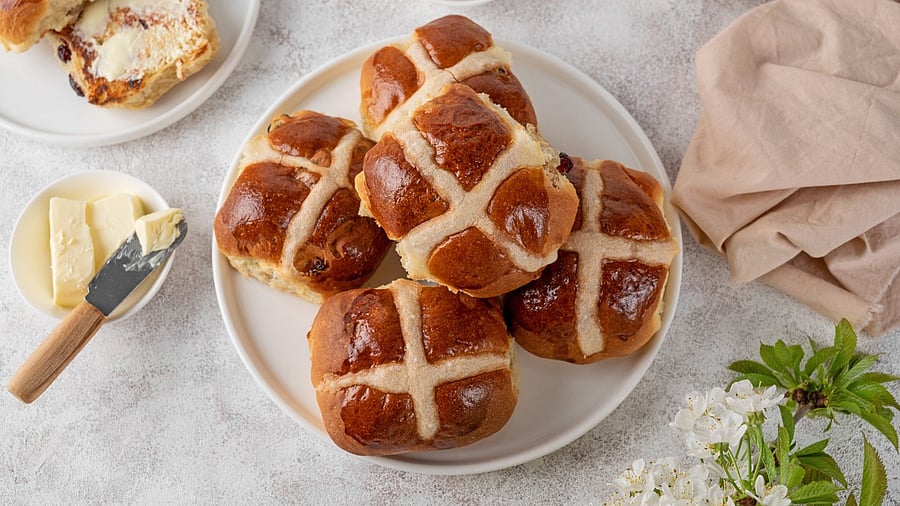
Representative image of Hot Cross Buns.
Credit: iStock Photo
As Easter approaches, I am taken back to a cherished memory from my school days. At a time when a large number of educational establishments in India were run by European missionaries, our all-boys school was managed by a group of dedicated Jesuits. It had the reputation of being a top-notch institution academically but was far from being elitist. We had students coming from all walks of life and covering a cross-section of social, economic and religious backgrounds, all mingling together happily with the common objective of securing a good education.
The school canteen was operated by a genial Goan couple who supplied snacks and lunch for a pack of perpetually hungry school kids. Mary was a sprightly, bespectacled woman with a boundless store of energy. Her husband, Simon, was a tall, well-built man with a broad, smiling face. The obliging and good-natured couple was extremely popular with the boys. At break times, the canteen was abuzz with activity as a swarm of boys crowded around them, jostling each other with outstretched arms, hoping to be served quickly, especially in the short duration of the mid-morning recess.
The counter was well-stocked with a range of glass jars filled with an assortment of sweets, lollipops, toffees and chocolate bars, as well as a wide choice of biscuits and cookies. A separate section on the side served ice creams and sodas. The two most popular snack items were a bun chop, a soft bun sliced open in the middle and stuffed with a mince patty. A variation of this was a kheema-gutli, a bun pav (a crusty round-shaped bread with a soft centre), again sliced in the centre and spread with a semi-solid mince curry.
On Fridays, meat was not served in the school canteen. The two favourite snacks went vegetarian, and those that took the school lunch were served fish instead of meat. This no-meat rule was strictly followed, particularly on
Good Friday. The absence of meat was hardly noticed with the arrival in the canteen of the eagerly awaited hot cross buns, traditionally eaten on Good Friday with the bun marking the end of the season of Lent.
I can still smell the delicious wafting aroma of those sweet, cinnamon-spiced buns with the soft interior filled with currants and topped with a white cross. Hot cross buns, like the diyas at Diwali, the dhansak at Navroz and the biryani at Eid, were shared and enjoyed at our commonly celebrated festivals. They became part and parcel of our harmonious communities and were integrated into our pluralistic culture.
How much will today’s children imbibe of the inclusiveness of our once-shared religious traditions, I wonder?